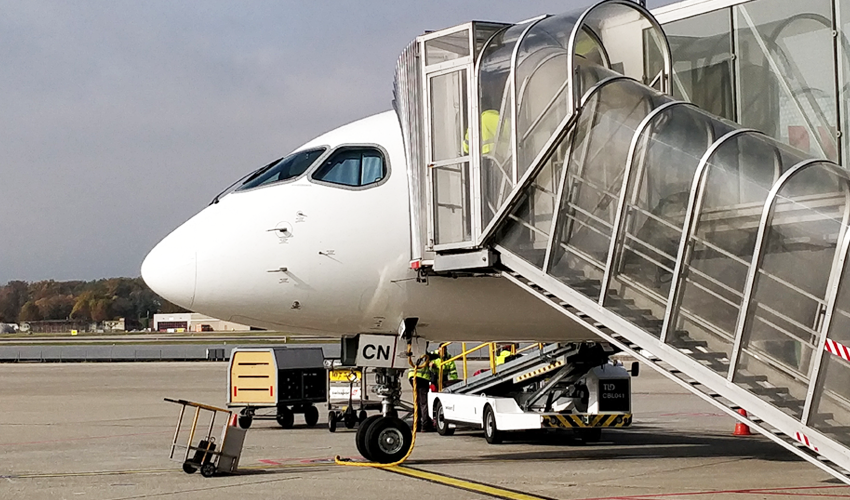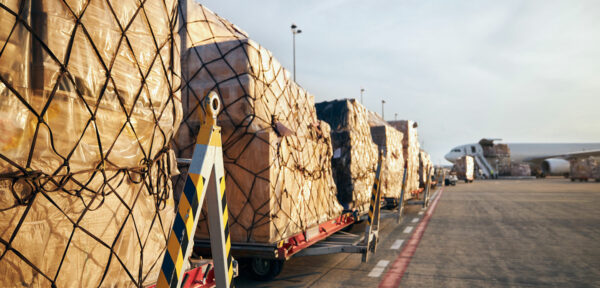Air Cargo Carriers Experiencing Increasing Demand and Competition
According to data compiled by the International Air Transport Association (IATA), demand for air cargo increased by 6.9% in 2021 compared to 2019 pre-pandemic levels and by 18.7% when contrasted against 2020. The sector performed especially well in December 2021. It proved to have had its second largest gain in year-on-year demand since 1990, second only to 2010’s 20.6% increase. Here are some of the factors that influenced the performance of air cargo in 2021:
- Rising global goods trade (e.g., a November 2021 7.7% increase) and increased global industrial production (i.e., by 4% in November), along with low inventory-to-sales ratios, increasing demand for personal protection equipment due to surging COVID-19, and air cargo’s overall cost-competitiveness were positive influences on the sector.
- The lack of capacity also paved the way for increased yields and revenues, as well as support to airlines and select long-haul passenger services.
- Capacity in 2021 was 10.9% below 2019’s 12.9% for international operations due to bottlenecks at key hubs. Also negatively affecting the sector were persistent supply chain problems stemming from labor shortages due to virus-related staff quarantines, inadequate storage space at various airports, and processing backlogs.
As for regional performance differences, North American carriers led in performance with an annual increase in 2021 international demand of 20.2%. They were followed by Middle Eastern and African carriers who posted 10.6% and 11.3% increases, respectively. Both European and Asian carriers posted a 3.6% increase and Latin American carries posted a decline of 15.2% in 2021.
Air cargo also was affected by heightened competition from freight operators and ocean carriers, including CMA CGM, Maersk, Amazon and Mercado Libre. For instance, Amazon alone has a fleet of over 80 planes, which continues to expand along with other operators’ fleets. Leading freight operators and ocean carriers are transitioning into end-to-end logistics providers and transforming the airfreight landscape significantly. Through their diversification, they are causing traditional air cargo carriers to pause and further consider what their customers need and want in order to remain competitive.

Passenger Travel Recovering Well, but Challenges Remain for Business Travel
With passenger travel recovering steadily, the aviation industry is proving its resiliency. Based on a PwC industry outlook report, only 64 airlines failed with 30 ceasing operations, 15 are still in restructuring mode, and 19 already having emerged from their restructuring processes. The same report’s global air passenger data shows an estimated 18% increase in 2021 over 2020. That is still below 50% of pre-pandemic levels, but indicative of a recovery.
PwC’s Ireland’s Senior Aviation Finance Consultant Dick Forsberg noted, “It is clear that when Covid-19 passes, passenger response will be immediate and strong – people will seek to return to the skies as soon as they are physically and legally able and feel safe to do so.”
He continued, “The recovery in business travel remains more problematic, particularly for high-yield long-haul passengers, where full-service network carriers often depend on their premium fares and have invested heavily in business class cabins.”
It is expected that airlines will have to make some changes to address sluggish business travel. Among some of the changes likely are replacing business class capacity to accommodate price-conscious business travelers.
Ghost Flights Spooking the Industry
The dilemma for airlines looking to retain their takeoff and landing slots at airports has created yet another predicament – ghost flights. Those are airplanes with empty seats, unprepared meals, and unwatched safety videos. They fly in the face of optimum resource management and sustainability goals and opposition to them recently earned at least 4,000 signatures on a United Kingdom parliamentary petition. Contained in the petition were harsh words including, “Airlines have been flying planes empty to retain their landing slots. These ghost flights are a shocking waste of resources and a needless source of emissions”
Still, European Union (EU) regulations require that carriers maintain a certain percentage of their scheduled flights in order to retain their slots. Typically, airlines must adhere to the 80:20 rule whereby 80% of their allocated runway times is fulfilled. The pandemic loosened these requirements to a 50:50 rule, but increasing travel is expected to bring back the former rules. That is not sitting well with the airlines which anticipate having to increase their ghost flights.
In mid-January, Lufthansa Group CEO Carsten Spohr stated, “We will have to carry out 18,000 extra, unnecessary flights just to secure our takeoff and landing rights.” Lufthansa Group owns Lufthansa, Swiss International Airlines, Austrian Airlines, Eurowings and Brussels Airlines. The Lufthansa Group CEO’s statement drew a response from Ryanair Chief Executive Michael O’Leary who said, “If Lufthansa doesn’t want to operate ghost flights to protect its slots, then simply sell these seats at low fares and help accelerate the recovery of short and long-haul air travel to and from Europe.” Lufthansa’s position is that it is pandemic-related restrictions and not fares that are impeding the recovery.





0 comments on “Aviation Wrap-Up January 2022”